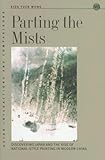Parting the Mists : Discovering Japan and the Rise of National-Style Painting in Modern China / Aida Yuen Wong.
Material type: TextPublisher: Honolulu : University of Hawaii Press, [2006]Copyright date: ©2006Description: 1 online resource (232 p.) : 64 illus., 30 in colorContent type:
TextPublisher: Honolulu : University of Hawaii Press, [2006]Copyright date: ©2006Description: 1 online resource (232 p.) : 64 illus., 30 in colorContent type: - 9780824829520
- 9780824845360
- 320
- online - DeGruyter
- Issued also in print.
| Item type | Current library | Call number | URL | Status | Notes | Barcode | |
|---|---|---|---|---|---|---|---|
 eBook
eBook
|
Biblioteca "Angelicum" Pont. Univ. S.Tommaso d'Aquino Nuvola online | online - DeGruyter (Browse shelf(Opens below)) | Online access | Not for loan (Accesso limitato) | Accesso per gli utenti autorizzati / Access for authorized users | (dgr)9780824845360 |
Browsing Biblioteca "Angelicum" Pont. Univ. S.Tommaso d'Aquino shelves, Shelving location: Nuvola online Close shelf browser (Hides shelf browser)

|

|

|

|

|

|

|
||
| online - DeGruyter Unsui : A Diary of Zen Monastic Life / | online - DeGruyter A Brief History of Imbecility : Poetry and Prose of Takamura Kōtarō / | online - DeGruyter Tidings of the King : A Translation and Ethnohistorical Analysis of the Rāyavācakamu / | online - DeGruyter Parting the Mists : Discovering Japan and the Rise of National-Style Painting in Modern China / | online - DeGruyter The Lotus Sutra in Japanese Culture / | online - DeGruyter Heidegger and Asian Thought / | online - DeGruyter Dismembering Lahui : A History of the Hawaiian Nation to 1887 / |
Frontmatter -- Contents -- Illustrations -- Series Editor's Preface -- Acknowledgments -- Notes to the Reader -- Introduction -- 1. Tradition Is a Foreign Country -- 2. Nationalism and the Writing of New Histories -- 3. Literati Painting as the "Oriental Modern" -- 4. Wu Changshuo's Japanese Circle: Between Patronage and Style -- 5. Six Exhibitions and Sino-Japanese Diplomacy -- Conclusion -- Notes -- Glossary -- Bibliography -- Index
restricted access online access with authorization star
http://purl.org/coar/access_right/c_16ec
In Parting the Mists, Aida Yuen Wong makes a convincing argument that the forging of a national tradition in modern China was frequently pursued in association with rather than in rejection of Japan. The focus of her book is on Japan's integral role in the invention of "national-style painting," or guohua, in early-twentieth-century China. Guohua, referring to brush paintings on traditional formats, is often misconstrued as a residual conservatism from the dynastic age that barricaded itself within classical traditions. Wong places this art form at the forefront of cross-cultural exchange. Notable proponents of guohua (e.g., Chen Hengke, Jin Cheng, Fu Baoshi, and Gao Jianfu) are discussed in connection with Japan, where they discovered stylistic and ideological paradigms consonant with the empowering of "Asian/Oriental" cultural practices against the backdrop of encroaching westernization. Not just a "window on the West," Japan stood as an informant of China modernism in its own right.The first book in English devoted to Sino-Japanese dialogues in modern art, Parting the Mists explores the sensitive phenomenon of Japanism in the practice and theory of Chinese painting. Wong carries out a methodologically agile study that sheds light on multiple spheres: stylistic and iconographic innovations, history writing, art theory, patronage and the market, geopolitics, the creation of artists' societies, and exhibitions. Without avoiding the dark history of Japanese imperialism, she provides a nuanced reading of Chinese views about Japan and the two countries' convergent, and often colliding, courses of nationalism.
Issued also in print.
Mode of access: Internet via World Wide Web.
In English.
Description based on online resource; title from PDF title page (publisher's Web site, viewed 02. Mrz 2022)


